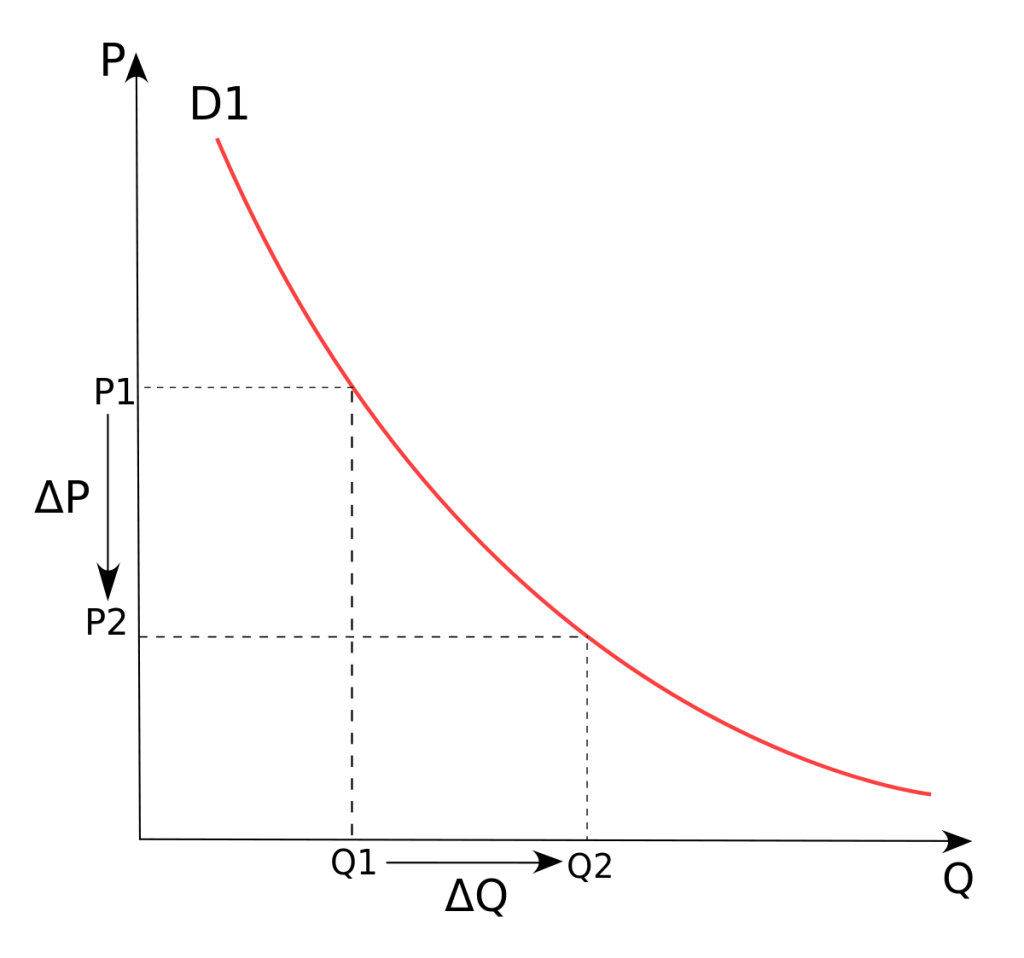Elasticity is a measure to determine how much the percentage change in one variable affects another. For example: how much an increase in price affects demand. Thus, the price elasticity of demand is responsible for measuring the reaction of consumers to changes in the price of a good.
How to calculate
Mathematically speaking, the elasticity tells us what percentage of the reduction (or increase) in demand is for a 1% increase in price, holding all other variables constant.
The calculation of price elasticity follows the mathematical representation:

We say that a variable is elastic when it responds to small variations. Similarly, an inelastic variable does not respond easily to external variations.
This formula can take us to the graphic representation for price elasticity. It represents the slope in the curve of the graph of price x quantity (demand):

From this calculation three scenarios are possible:
- If the result equals 0, we have a perfectly inelastic scenario, where the variation in one of the variables will not impact the second one in any way.
- If the result is between 0 and 1, we say that the condition is relatively inelastic. This means that consumers are somewhat insensitive to price changes. This type of product is usually essential and has no or few substitute options. That is, if a person consumes a medicine that is mandatory for his life, he will probably not stop consuming it because of some market change.
- And finally, with a result greater than 1, we have a relatively elastic scenario. That is, goods that have easy substitutes. That scenario is more sensitive to price changes. This means that if a product such as steak has its price raised, the consumer will look for alternatives, searching for cheaper meats that fit their budget.
The higher the score, the higher the elasticity.
Now that you understand better what elasticity is. How can it affect your business?
There are four main types of applications of elasticity in a business:
- The price elasticity of demand, that is, how a change in price affects the demand for your product.
- The income elasticity of demand, the result of changing consumer income.
- A cross elasticity of demand will consider the change in demand for one product from the change in price of another product.
- Finally, there is an elasticity from the change in the quantity supplied of a product from the change in price.
All these variations impacts on enterprises and are relevant to calculate the price of a product. Clarity about the elasticities involved in your business will allow for more strategic action, taking into account among other things consumer behavior.
Get in touch with Supply Brain

